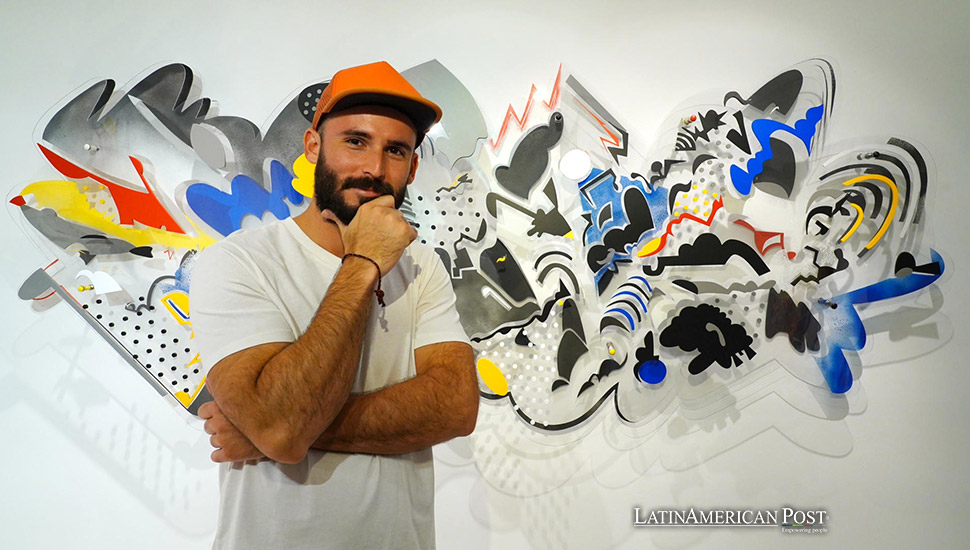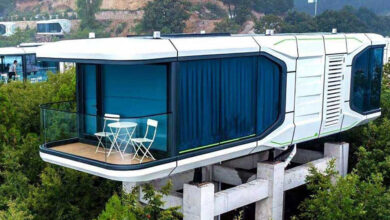Puerto Rican Artists Turn to Self-Management Amid Lack of Support

With limited government support and a scarcity of public exhibition spaces, young Puerto Rican artists rely on self-management and private galleries to build their careers. As EFE reports, these artists are navigating the challenges of art entrepreneurship in a complex landscape.
Self-Management: A Necessity for Puerto Rican Artists
In Puerto Rico, young visual artists find that the road to success requires more than talent—it demands entrepreneurship. With public support for the arts dwindling and government funding often out of reach, many artists are turning to self-management to showcase their work and make a living. In an environment where institutional support is scarce, self-reliance has become a survival strategy.
One artist embodying this spirit is Edwin Maurás Maldonado, a 33-year-old from Trujillo Alto. Born into a family of artists, Maldonado grew up surrounded by creative tools—paintbrushes, canvases, and sculptures. His upbringing instilled in him a passion for expression through art, and he has since developed a distinctive style, using materials such as PVC, methacrylate, and stainless steel to create abstract compositions.
Despite his talent, like many artists in Puerto Rico, Maldonado has had to rely heavily on self-management to sustain his career. Recently, he presented his third solo exhibition, Recetas Imaginarias para Salir del Caos (Imaginary Recipes for Escaping Chaos), at A Cueto Gallery. The exhibition, which includes 17 sculptural works he began creating in 2017, represents a significant achievement for Maldonado, who faced the challenges of the COVID-19 pandemic and Hurricane Fiona along the way.
“Self-management is crucial,” Maldonado shared with EFE. “The support, if it exists, no one ever hears about it. So, if it does exist, how will people know? And if it doesn’t, why aren’t they doing anything? There is a real need within the artistic community.”
Private Galleries as a Lifeline for Emerging Creatives
With the scarcity of public exhibition spaces in Puerto Rico, private and independent galleries have become essential platforms for artists to showcase their work. These galleries offer an alternative for artists who lack access to state-funded venues, providing a space to exhibit their creations and connect with potential buyers.
Fabián Alexander Rodríguez, a 32-year-old multidisciplinary artist, emphasized the importance of self-management in the current art landscape. Like Maldonado, Rodríguez has taken control of his artistic destiny, relying on his initiative to navigate the art world. Recently, he exhibited his work at Guatíbiri Gallery, located in the Río Piedras neighborhood of San Juan. Guatíbiri is one of the oldest galleries in the Caribbean, founded by Rubén Darío, a former Wall Street employee who opened the space to support Puerto Rican artists.
While Rodríguez is grateful for the opportunity to exhibit in a venue with such a rich history, he recognizes the limitations of relying on private galleries. “The audience that comes to these independent and private galleries is minimal,” he told EFE. This lack of reach makes it difficult for emerging artists to gain widespread recognition or financial stability, even when they secure exhibitions.
Artists like Rodríguez and Maldonado are forced to wear many hats—not just as creators but also as their promoters, managers, and financial planners. The lack of institutional support means they must find innovative ways to reach audiences, attract buyers, and sustain their careers.
The Struggle for Government Support and Arts Funding
While self-management has become a critical tool for Puerto Rican artists, many continue to lament the lack of government support for the arts. Yanira Santa, manager of the Fine Arts and Technology Program at Puerto Rico’s Department of Education, acknowledged this issue. “Historically, there have not been many funds allocated to the arts,” Santa explained to EFE.
This year, however, brought some relief. Puerto Rico’s Department of Education received $4 million in funding for cultural programs, of which approximately $1.2 million was allocated to schools and art projects. Santa noted that this was the first time such funds were made available in years, allowing schools to purchase much-needed art materials.
Despite this influx of funds, the struggle for consistent support continues. As Santa pointed out, the challenge isn’t just securing funding—it’s creating a cohesive plan that integrates the arts with other educational subjects and justifies the need for sustained financial backing. For Puerto Rican artists, while there may be moments of relief, they cannot rely on government support as a long-term solution to their struggles.
For artists like Maldonado and Rodríguez, the lack of consistent support highlights the importance of self-reliance. Both have expressed frustration with the difficulties of receiving funding or institutional backing. “You have to be very well-known to receive government or institutional support,” Rodríguez said. This barrier to entry makes it even more difficult for emerging artists to establish themselves and gain recognition.
The Future of Art Entrepreneurship in Puerto Rico
As young artists in Puerto Rico continue to navigate the challenges of self-management and limited resources, the future of art entrepreneurship in the region remains uncertain. While private galleries and self-management strategies offer short-term solutions, the long-term sustainability of the art community depends on a broader cultural shift that values and invests in the arts.
Puerto Rican artists have demonstrated remarkable resilience in the face of adversity. They have found ways to thrive despite the lack of institutional support, using creativity in their work and how they manage their careers. However, without increased public funding and more accessible exhibition spaces, many fear that the art scene will remain limited in its scope and reach.
The government and private sector must recognize the importance of supporting the arts to foster a vibrant and sustainable art community. This includes increasing funding for public art programs, creating more exhibition opportunities for emerging artists, and promoting cultural initiatives that connect local artists with global audiences.
Ultimately, the future of art entrepreneurship in Puerto Rico lies in the hands of its artists, who will continue to push boundaries and find innovative ways to share their work. As the stories of Edwin Maurás Maldonado and Fabián Alexander Rodríguez demonstrate, the power of self-management and entrepreneurship can take artists far. Yet, with more significant support, Puerto Rico’s art scene could flourish even more, creating opportunities for artists to thrive locally and globally.
Also read: Acciona Energía Quits Chile’s Renewable Energy Group Over Industry Stalemate
Puerto Rican artists are proving that self-management and entrepreneurship are essential skills in today’s art world. As EFE reports, with limited public funding and scarce exhibition opportunities, these young creatives are taking control of their careers and finding ways to succeed in a challenging landscape. However, while private galleries and self-management provide temporary solutions, the future of Puerto Rican art will depend on more excellent public support and recognition of the value the arts bring to society.





